As an aquarist seeking to elevate your skills, the transition to a more advanced setup can be both thrilling and daunting. Delve into the intricacies of creating the perfect brackish environment for your aquatic companions. This article explores essential topics such as salinity levels, specific gravity measurements, and the gradual acclimation of fish to their new habitat.

Apart from my growing interest in saltwater aquariums, I also had to do thorough research on how to properly make brackish water for my new green spotted puffers.
To be fair, I wasn’t going to dig deep into this topic, but after I realized that I need to migrate my green fellows to brackish conditions, I just had to.
So I started exploring the process of converting their freshwater tank to brackish, which appeared a bit intimidating at first.
How much and what type of salt should you use?
What’s the correct ratio to get the targeted specific gravity reading on your hydrometer?
How do you make the brackish water stable for your Opae Ula shrimp, nerite snails, or fiddler crabs?
In this guide, I’ll give you all the details of what I’ve found back then, so let’s dive in!
How to Produce Brackish Water at Home?
Brackish water in nature is a result of mixing seawater (saltwater) and fresh water in estuaries, where rivers flow into the open sea.
To mimic this environment you need to recreate its salinity levels which are measured in what’s known as specific gravity (SG).
To measure this parameter you would need a specific tool which is either a hydrometer or a refractometer.
Brackish water’s specific gravity is within the range of 1.000 and 1.019.
Each fish or invertebrate you’re about to keep in your new brackish aquarium has a preferred range of specific gravity. For this reason, it helps to come up with a list of creatures you want to keep in your tank beforehand.
Here’s a step-by-step guide on how to make brackish water:
- Pour water into a bucket. Dechlorinate the water if it comes from the tap.
- Bring the dechlorinated freshwater to the desired aquarium temperature.
- Add 2 to 2.5 tablespoons of marine salt per gallon of water (9 to 12 grams of salt per liter). By doing so you will end up with water with salinity within the range of 1.005 to 1.015 SG.
- Stir and wait for the salt to dissolve into the water. It takes at least 20 minutes for marine salt to dissolve properly.
- Use a refractometer or a hydrometer to measure the specific gravity of the water.
- Add marine salt or water until the desired brackish water salinity level is reached.
So let’s explore these steps in detail:
#1 Pour water into a bucket and dechlorinate.
If it’s water from the tap that you’re using, you should dechlorinate it before moving on to the next step.
That’s because tap water usually contains Chlorine and/or Chloramine.
Both are lethal to fish and beneficial nitrifying bacteria, so you need to use a dechlorinator, and the common choice here is usually Seachem Prime.
You could also wait for the chemicals to evaporate naturally but that usually takes too long to be practical.
Anyway, add your conditioner of choice to the bucket and wait for 5 minutes to make sure Chlorine and Chloramine are thoroughly neutralized.
When creating brackish water, many aquarists prefer to use filtered water that has gone through a RO / DI system. Keep in mind that RO filtered water may still contain chloramine or chlorine.
#2 Bring the dechlorinated freshwater to your desired aquarium temperature.
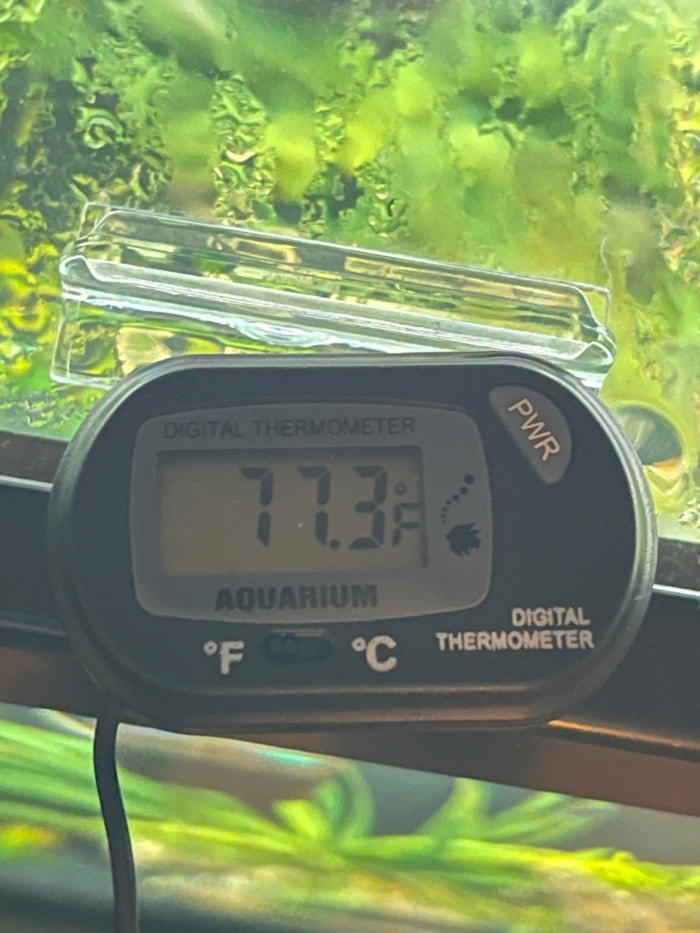
In case you’re converting a freshwater aquarium into a brackish water one, you should check the current tank’s water temperature and it should match the temperature of water in the bucket.
Heating the bucket water will also speed up the process of how fast sea salt dissolves.
Temperature fluctuations are one of the main reasons fish suffer damage after a water change.
Related Read: Why do Fish Die After a Water Change?
#3 Add 2 to 2.5 tablespoons of marine salt per gallon of water (9 to 12 grams of salt per liter).

The aforementioned salt-to-water ratio will result in water with specific gravity within the brackish spectrum: 1.005 – 1.015.
Important: Make sure you use sea/marine salt, and NOT aquarium or table salt!
You could also use a commercially available product designed for making saltwater for aquarium fish.
A product that I typically use when creating brackish water is Instant Ocean Sea Salt (link to check the exact type on Amazon.com).
To know how much of the mix you should add to produce brackish water just read the label: go for 1 cup of Instant Ocean salt per 5 gallons of dechlorinated water.
You can also stick to my initial recommendation about using marine salt instead of that – that’s up to you.
#4 Stir and wait for the salt to dissolve into the water.

I recommend waiting for at least an hour for the salt to completely dissolve.
The more time you give it – the more accurate the specific gravity reading on your hydrometer.
Some aquarists mix the salt and water one day in advance to ensure proper salt dissolution.
Important: Never add marine salt directly to an aquarium. You should always mix it separately and attentively monitor the salinity levels. Furthermore – pouring marine salt directly into a tank that has living fish, invertebrates, or plants in it may cause them serious damage.
#5 Measure the specific gravity of the water.
To be fair, the refractometer is the most accurate tool for measuring specific gravity.
Still, most people use the less accurate hydrometers, such as this one by Instant Ocean.
No matter what tool you’re utilizing, it’s important to measure the salinity levels of the water to see whether they fit within the desired salinity range.
Anyway, different brackish water species have different requirements in terms of water salinity levels.
For example, if you’re trying to breed Amano shrimp, you should aim for a Specific Gravity reading of 1.022. Cherry shrimp are less tolerant to water salinity but can be acclimated to live in specific gravity of 1.001 to 1.004.
Also, if you want to make brackish water for your Opae Ula shrimp, it’s advisable to aim for 1.005 SG to 1.015 SG.
If you’re keeping Fiddler crabs or nerite snails go for 1.005 to 1.010 SG. Nerite snail eggs can hatch in freshwater but the babies will only survive in brackish conditions.
Another example of a popular brackish fish is the various species of Pufferfish. Green Spotted Puffers require salinity of around 1.015 in their aquariums, while Figure 8 puffers require 1.003 to 1.008.
Check out my article on brackish water aquarium fish, where you can find some cool stocking ideas and basic care guidelines.
#6 Add marine salt or water until the desired salinity level is reached.
In other words, if you see that the hydrometer shows 1.003 SG, but you’re aiming for 1.010 – add a bit more of the marine salt mix, stir and wait for it to dissolve.
After the adjustment measure the salinity levels again.
If the Specific Gravity is too high, add more water, until you get into the desired range.
#7 Pour the brackish water into the aquarium.
If you’re converting a freshwater fish tank to a brackish one, you should do it gradually to avoid stressing out its inhabitants. A slow increase in salinity makes sure that each fish or invertebrate will tolerate the change well.
Make 15% to 20% water changes on a weekly basis, until you reach the desired salinity levels.
For example, if you have a 20-gallon tank, take out 4 gallons of aquarium water every week and replace it with brackish water with salinity levels of around 1.004 – 1.005 SG.
By doing so, in about a month your aquarium water would reach the targeted parameters in terms of salinity.
If you’re setting up a brand new brackish fish tank, you should again, follow the exact same steps I describe above. Once you achieve the target Specific Gravity readings, you should continue with the aquarium setup as usual.
Author’s note: If the tank is brand new you should obviously not forget to wait out the Nitrogen Cycle. However, if the tank has no inhabitants but is already cycled the process will take longer because either of the two will happen:
- If you change the salinity too fast then you’ll lose the beneficial bacteria and you’ll need to recycle the tank;
- If you change the salinity slow enough to not disturb the bacteria, it will take roughly the same time as if you’d recycle.
From my experience, increasing the salinity in a freshwater aquarium with more than 0.001 per week could eliminate beneficial bacteria.
So if you want to bring up your cycled tank to 1.010 SG without disrupting the bacterial colonies – it’d take roughly ten weeks.
Typically, the fastest and most productive way here would be to instantly change the salinity and recycle the tank with bottled beneficial bacteria.
That’s because bottled bacteria speed up the cycling process.
This approach would take up to two and a half weeks at most.
Keeping a Brackish Fish Tank
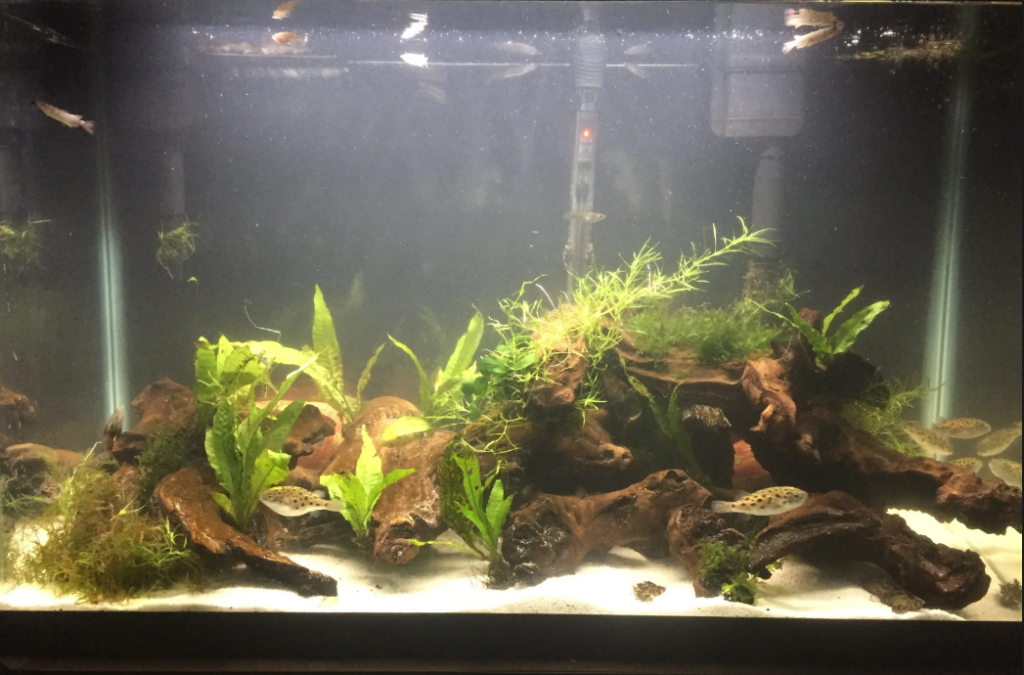
To maintain your brackish water aquarium, do the following:
- Keep an eye on the waterline of your tank.
When you notice that water has evaporated – top it off with bottled, dechlorinated tap, or RO filtered water.
In my brackish aquariums, I usually strive to maintain the salinity levels within the range of 1.007 SG to 1.015 SG.
Throughout the week, I’d occasionally check out the waterline of my tank and notice that it has gotten low from evaporation.
Since marine salt doesn’t evaporate, the evaporation of water increases the salinity levels.
Therefore, I’d occasionally top off my aquarium with some fresh water to maintain the salinity levels.
- Change a portion of the water on a weekly basis.
I’d usually say that 10% to 20% water changes on a weekly basis is a pretty good starting point for, say, shrimp and crabs.
Of course, this percentage may vary to up to 30% if you’re looking after brackish water pet fish that produce a lot more waste, such as the green spotted puffers.
In the latter case, replacing more water will clear out the tank’s water more effectively.
To make a water change, follow my step-by-step instructions above to create brackish water, match its temperature to your tank’s temperature, and then replace a portion of aquarium water with it.
Also, always keep an eye on your water parameters, and whenever you notice that something is off, act accordingly.
How to Add New fish into a Brackish Tank
Since brackish fish can tolerate freshwater environments, the ones sold at the fish stores are rarely kept in brackish water.
This is not ideal. Make sure to ask the sellers if the water they keep their fish is brackish, and if it is – proceed with the classic acclimating process when adding them to your new tank.
However, if the brackish fish were kept in freshwater, you’d want to gradually adapt them to their new environment, since adding them straight into brackish water can lead to osmotic shock in their little bodies.
Therefore, it’s best to introduce your new pets into a cycled freshwater aquarium and then slowly increase the water salinity until it reaches your desired levels.
To do this, you’ll need to make 10 to 15% weekly water changes with your target salinity level.
This will allow your pet fish to slowly acclimate to their new environment without suffering any damage.
Using this method, you should be able to reach your target salinity level in roughly four weeks time.
My Final words
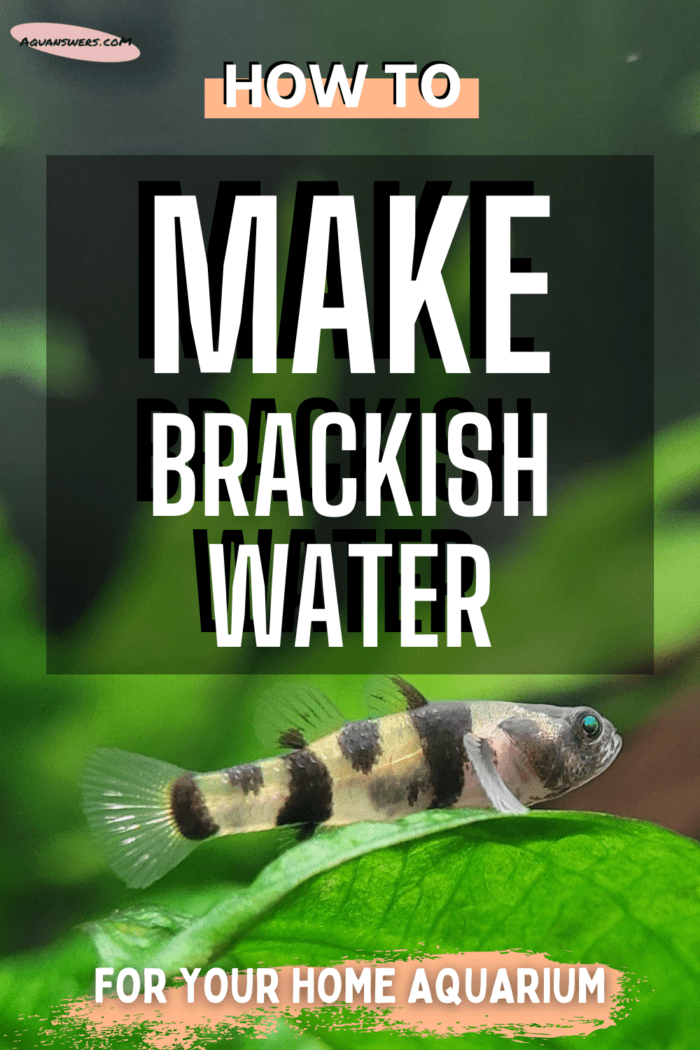
Since you finally know how making brackish water works, you can set up your new tank and take proper care of your aquarium pets.
You can add a bit of sand substrate, a stone or a piece of driftwood, and some plants such as java fern or java moss to provide your fiddler crabs, nerite snails or shy Opae Ula shrimp with some nice hiding spots.
No matter what fish or invertebrates you’re taking care of, I’m sure that they’ll appreciate your effort. After all, some species (such as puffers) live a significantly longer and happier life in brackish water compared to freshwater tanks.
Anyway, I hope that you found my guide helpful. Leave me a comment below if you have any questions!


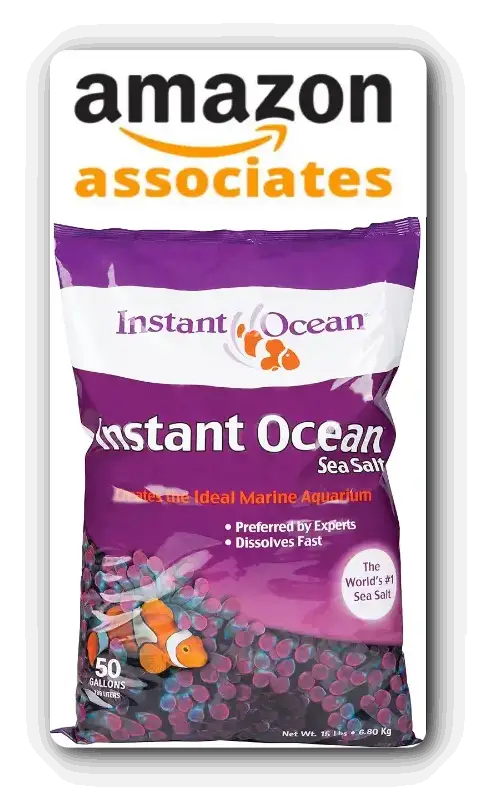


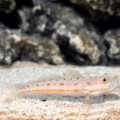

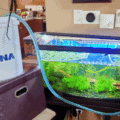
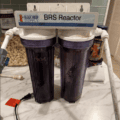
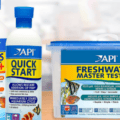



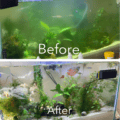
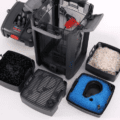
This was the most perfect, informative article. Thanks for publishing.
Thanks for coming over to my blog 🙂
Thank you so much, your article is very informative, this will help me a lot, thank you for sharing. God Bless